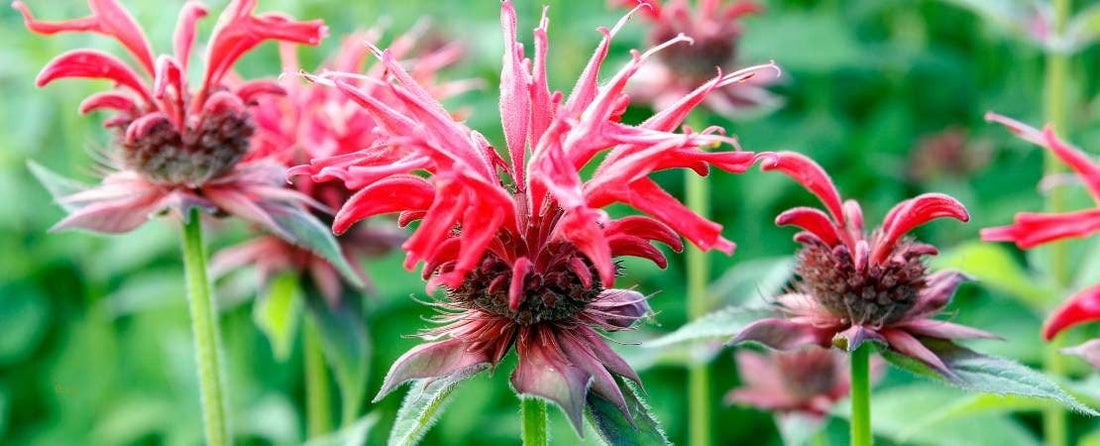
Know Before You Grow: Bee Balm
Share
Native Bee Balm Planting & Care Tips
Bee balm is Monarda didymain the mint family (Lamiaceae). It is an eastern U.S. plant, also called Oswego tea, wild bergamot, horsemint; Oswego tea because the Oswego’s drank it as tea, bergamot because it smells something like the bergamot orange used in Earl Grey tea, and horsemint because horses like eating it. Colonists drank it as a Liberty Tea protesting the English tax on tea just before the American Revolution.
There are 21 other species of Monarda, all native to North America, called monardas or bee balms. They all smell faintly minty. Most grow to about three feet tall and have big bright flowers in colors from white to red and pink to purples. They are magnets for bees, butterflies, and hummingbirds. The plants flower from summer into the fall.
Planting Bee Balm
Plant seeds indoors for transplanting 8-10 weeks before the last frost date. Plant seeds outdoors from early spring through midsummer.
Bee balm is very tolerant of sun or shade, wet soils to dry soils. It is particularly useful for planting in very soggy locations, where other plants die.
Tips for Growing Bee Balm
- Bee balm will spread, sometimes aggressively. Be prepared to cut it back.
- In shade, bee balm can grow too tall and flop over, requiring staking.
- Bee balm is susceptible to powdery mildew, especially if too crowded.
- Remove dead flowers for more energetic flowering.
Popular Uses for Bee Balm
Steep it as a minty tea (if you haven't used pesticides).
Bee balm makes handsome cut flowers.